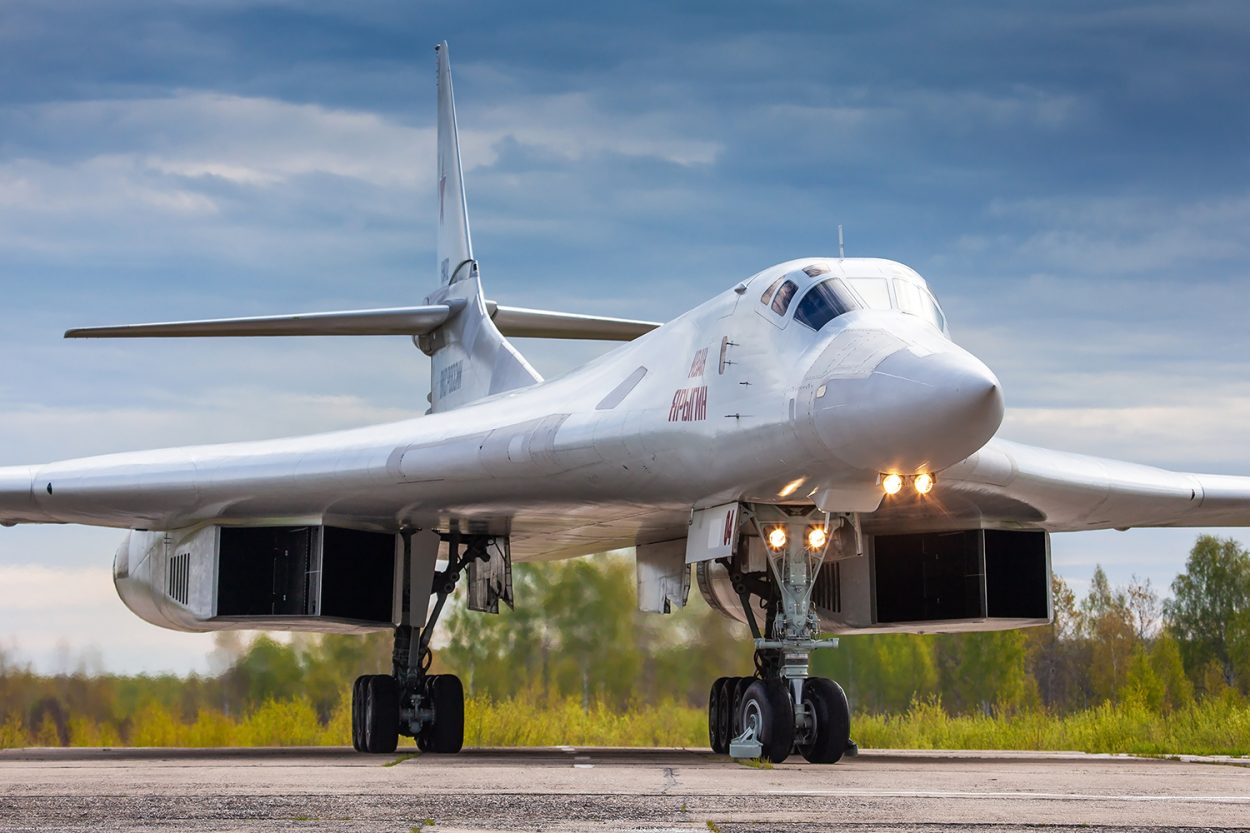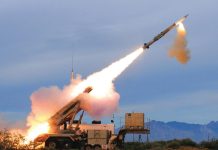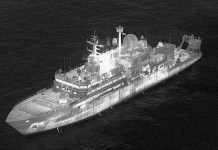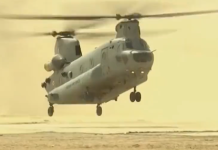Russian Defense Ministry and United Aircraft Corporation (UAC) announced that they have begun testing Russia’s first modified Tupolev Tu-160M strategic bomber prototype.
Russian Su-35 Fighters ‘Attack’ US MQ-9 Reaper Drones In Syria; US Releases Footage Of ‘Flare & Afterburner’ Assault
“The first upgraded prototype of the Tu-160M strategic missile-carrying bomber developed by the Tupolev Public Company (part of the UAC within Rostec) has entered the program of state joint trials,” the press office said in a statement.
The statement by Russia’s official weapons exporter firm Rostec’s press office on July 6 informed that the testing is being carried out by a joint crew of the Russian Defense Ministry and the design company.
The state testing has kick-started only now, but factory testing of the strategic bombers has been underway for a long time.
In January 2022, a brand-new Tupolev Tu-160M strategic bomber took its first flight. The aircraft took off from the Kazan Aviation Enterprise’s aerodrome, a Tupolev Company division.
Later, in December of that same year, the United Aircraft Corporation of Russia, part of the state corporation Rostec, announced that a second Tupolev Tu-160M strategic missile-carrying bomber took to the skies for the first time following the upgrade.
In a statement, the UAC press office said, “Another upgraded Tu-160M strategic missile-carrying bomber developed by the Tupolev Company performed its debut flight.”
At the time, the UAC said the aircraft performed maneuvers to evaluate its airborne controllability and stability. The pilots also demonstrated how the aircraft’s systems and engines functioned besides evaluating its radio-electronic quality.
The Tu-160M is an upgraded variant of the Tu-160, which, along with Tu-95MS bombers, forms the backbone of the Russian Aerospace Force’s long-range aircraft. These bombers have been employed by the VKS to attack targets deep within Ukraine during the ongoing conflict.
Earlier this year, satellite images of the Olenya Air Base in Russia’s Kola peninsula revealed that about 16 strategic bombers had been deployed to this air base close to the NATO countries Finland and Norway. Out of these, there were two Tu-160 positioned at the southern end.
The Tu-160 was inducted into the Soviet Union’s Air Force in the late 1980s and was produced until 1995. Decades later, in 2015, Russian President Vladimir Putin authorized the production of the Tu-160M to enhance the strategic bomber capabilities of the VKS and make up for delays in the next-generation PAK-DA bomber program during a time of escalating tension with the West.

It is almost ironic that the upgraded Tu-160M is undergoing state flight testing when Russia’s war in Ukraine refuses to end after more than 15 months of intense fighting. In the course of this war, the Tu-160, along with the Tu-95 bombers, have also come under attack by Ukrainian drones.
In March this year, Rostec announced that it had decided to ratchet up the production of these strategic bombers.
“The company is increasing production of the famous White Swans, the signature piece of our strategic aviation. They are unique machines, beautiful on the outside and formidable in terms of their capabilities,” the Rostec chief said at the time.
The upgraded Tu-160M represents a major step forward for the Russian strategic bomber force as it allows the service to offset the delays in the PAK DA bomber program, which has been marred with delays.
With the PAK-DA still in the design and development stage and the imbalance created by the American unveiling of its next-generation B-21 Raider bomber, the Tu-160M White Swan will likely bolster the Russian fleet significantly.
The beginning of state testing could be a significant step in that direction.
Upgraded Tu-160M Is Coming!
As part of the upgrade program, the design documentation for the Tu-160M has been quickly digitalized, the vacuum welding technology for titanium parts has been restored, and production of the aircraft’s airframe has resumed.
The upgrade to the Tu-160M is being carried out in two stages, the first involves removing some outdated components, such as bomb sighting systems, and installing the new K-042K-1 navigation system and ABSU-200-1 autopilot. This Tu-160M1 model has been in use by the air force since late 2014.
The second Tu-160M2 phase includes the improved NK-32 engines (dubbed NK-32-02), the new Novella NV1.70 radar, a computerized “glass” cockpit, modern communications and anti-jamming equipment, as well as modern conventional and nuclear weapons.
The Kuznetsov NK-32 engine, originally installed in the Tu-160, is widely regarded as the most powerful combat aircraft engine, producing almost 55,000 pounds of thrust at full afterburner.
The Tu-160M is reportedly armed with X-101 family cruise missiles with conventional (high-explosive, high-explosive, cluster, volumetric detonating) and nuclear (X-102) warheads.
These missiles can fit in 12 slots on the aircraft. According to some sources, a Tu-160 missile-carrying aircraft specially modified for this role was used to launch the first combat tests of these missiles in Syria.
In addition to updating 16 already-existing Tu-160 bombers, earlier sources suggested that Russia will buy some 50 Tu-160M planes during the ensuing years. The serial manufacturing of the modified bomber was known to start sometime in 2023, with a minimum production rate of three aircraft per year.
Even though the manufacturer refrained from saying how many of these Tu-160M strategic bombers will be built each year, production is currently being expanded.
- Contact the author at sakshi.tiwari9555 (at) gmail.com
- Follow EurAsian Times on Google News




